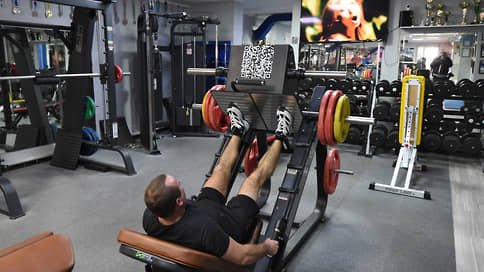Logistics let us down in fitness
[ad_1]

Against the backdrop of logistics problems that have already led to a 65% increase in the cost of exercise equipment, fitness clubs expect the government to reduce import customs duties on sports equipment from 5% to 2%. Since February, the cost of delivery to Russia has increased three to four times, and the time has increased to three months. It is not possible to place production within the country due to the lack of the necessary base.
The National Fitness Society (NFS) has asked the government to support the issue of reducing import duties on sports equipment to 2%. This is stated in a letter from the organization addressed to First Deputy Prime Minister Andrei Belousov (Kommersant has a copy). Now the amount of duties on the import of equipment is 5%, specifies the President of the NSF Elena Silina. Their size is regulated by the Eurasian Economic Commission (EEC) on the basis of proposals from the member states of the Union. In its appeal, the NSF asks the Russian authorities to notify the commission of its decision. In the office of Mr. Belousov, Kommersant’s questions were not promptly answered.
Support for the fitness industry was required against the backdrop of Western sanctions, as the industry is highly dependent on supplies from abroad, the NSF said in a statement. According to the organization’s estimates, about 50 companies import sports equipment into the country, which, before the imposition of sanctions, supplied 10% of the total volume of premium equipment, 20% of business class simulators and 70% of economy class. On average, one supplier accounted for 2 thousand units of imported equipment per year, which provides for the needs of about 90 clubs, indicate the NSF. Now, according to the organization, suppliers are facing problems in using new logistics routes. Because of this, delivery times have increased from three weeks to three months, and equipment has risen in price for clubs by 65%.
Since February, logistics has risen in price several times due to the workload of the remaining ports and the lack of containers, Georgy Koryagin, director of development at Hasttings (produces and supplies sports equipment), agrees. If at the beginning of 2022 the delivery of a container from China to Russia, according to the expert, cost an average of $3.5 thousand, now it costs $13 thousand. “VAT and customs duty are calculated from the amount including logistics costs,” he adds . Elena Silina points out that the reduction of customs duty can lead to significant cost savings.
Yury Fedyukin, managing partner of Enterprise Legal Solutions, although he considers the reduction of duties on equipment a way out for the industry, he is not sure that this will suit the government. “Probably, this may be a limited list of goods, mainly economy class,” he does not exclude. Yulia Shlenskaya, the president of the KBT Service customs broker, doubts that the authorities will meet the fitness industry halfway: the difference between duties of 5% and 2% is not so big, it will not affect the margin. “Receipt of funds to the budget is significantly reduced, so we need to forget about changing tariffs,” she notes. Ms. Shlenskaya calls the logistics of fitness equipment elementary: “The pieces of iron are loaded into a container in a semi-disassembled form. It’s like delivering nails.”
There are manufacturers of sports simulators in Russia. According to NSF estimates, in this case we are talking about about 300 companies, but 70% of them are small industries that cannot meet the needs of the market. It is not possible to place orders for the production of simulators within the country due to the lack of material and technical base, adds Mr. Koryagin. “We need oval iron pipes for strength training equipment, but they are not produced in Russia. You can only buy rectangular ones, but they are worse. For electric simulators, chips and microcircuits are needed, which are also not available in full, ”he explains. Difficulties with the supply of imported equipment, according to Mr. Koryagin’s forecasts, will persist for three to four years.
[ad_2]
Source link





